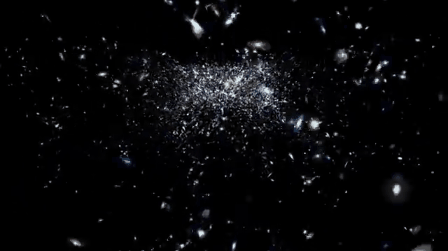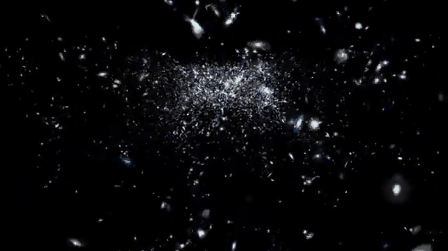
In the words of spectacularly wacky Douglas Adams (‘Hitchhiker’s Guide to The Galaxy’), “Space is big. You just won’t believe how vastly, hugely, mind-boggling big it is. I mean, you may think it’s a long way down the road to the chemist’s, but that’s just peanuts to space.”
All hyperbole aside, Adams’ words ring true. Space *IS* big. It takes light nearly a year to travel from one end of our solar system to the other alone. Because of size and technology restraints, we’ll never be able to travel from one end of the universe to the other in a single human lifetime. However, that doesn’t mean we can’t take a tour of the observable universe at warp speed.
This GIF (video can be found below), which uses data from the Galaxy and Mass Assembly (Gama) catalogue, does just that. It allows us to visualize how it might look if we were able to see all known galaxies in the observable universe, and, as you can see, it’s a bit dizzying.

GAMA, more specifically, is a project used to plot large-scale structure points, which are then used to shed light on the formation and evolution of galaxies. In order to utilize its data for the visual, the team had to scale the size of each galaxy up significantly, or this would more closely resemble Hubble’s famous ultra deep field image.
When the video was released, the team had this to say:
The Universe is full of vast collections of galaxies that are arranged into an intricate web of clusters and nodes connected by long strings. This remarkably organized structure is often called the ‘cosmic web’, with busy intersections of galaxies surrounding vast spaces, empty of anything visible to us on Earth.
“The spaces in the cosmic web are thought to be staggeringly empty,” said Dr Mehmet Alpaslan, who led the research. “They might contain just one or two galaxies, as opposed to the hundreds that are found in big clusters.”
These huge, empty regions are called voids, and for years, astronomers have been trying to understand the small population of galaxies that inhabit them. Using data from the Galaxy and Mass Assembly (GAMA) survey, Alpaslan and his colleagues found that the small number of galaxies inside these voids are arranged in a new way never seen before.
WATCH: “GAMA Survey (G15) Drop in Flythrough”

“We found small strings composed of just a few galaxies penetrating into the voids, a completely new type of structure that we’ve called ‘tendrils’,” said Alpaslan. To discover tendrils, the GAMA team created the largest ever galaxy census of the southern skies using observations from the Anglo-Australian Telescope in NSW, Australia.
“Our new catalogue has looked deeper into space and mapped each patch of sky up to ten times to make sure it’s as thorough as possible,” said Dr Aaron Robotham from The University of Western Australia node of ICRAR. “We weren’t sure what we’d find when we looked at voids in detail, but it was amazing to find so many of these tendrils lurking in regions that have previously been classified as empty,” said Robotham.
“This means that voids might be much smaller than we previously thought, and that galaxies that were previously thought to be in a void might just be part of a tendril,” said Alpaslan.
The GAMA team plan to catalogue more tendrils for further study as their detailed map of the Universe expands.
[Reference: ICRAR]